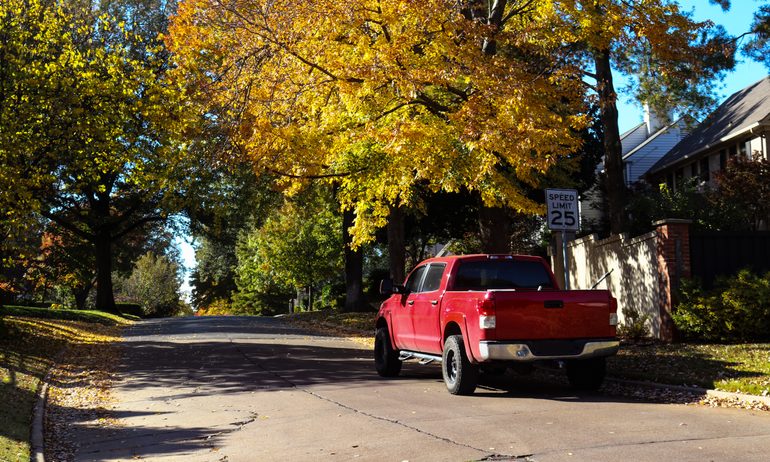Pay-Per-Mile Car Insurance: What You Need to Know
If you don’t drive much, pay-per-mile car insurance could lower costs.

Many, or all, of the products featured on this page are from our advertising partners who compensate us when you take certain actions on our website or click to take an action on their website. However, this does not influence our evaluations. Our opinions are our own. Here is a list of our partners and here's how we make money.
If you have a car but barely drive it, you might find yourself wondering if there’s a cheaper car insurance option beyond traditional coverage. Pay-per-mile insurance, sometimes called pay-as-you-go insurance, might save you money — up to 40%, according to some carriers — but only if you truly don’t drive regularly.
What is pay-per-mile car insurance?
Pay-per-mile insurance lets you pay for coverage based on how many miles you drive. Because of this, it’s best suited for people who don't drive often.
The cost of pay-per-mile car insurance depends on your set monthly base rate, which is affected by factors such as gender, age and car, and your per-mile rate. Your total premium changes every month with the number of miles you drive.
While pay-per-mile insurance is different from a conventional auto insurance policy, both give you the same coverage options. You don’t need to worry about losing coverage that you need if you decide to switch to a per-mile policy, unless the insurer doesn’t offer that coverage at all.
Pay-per-mile insurance is different from a low-mileage discount, which some insurers offer. A low-mileage discount offers a percentage off the cost of a traditional policy, while pay-per-mile car insurance determines your rate based on how far you drive.
» MORE: How to save on car insurance
How car insurers track your driving
Insurance companies use technology known as “telematics” to track driving behaviors, including how far you drive. Telematics can also track risky habits — think hard braking or quick accelerating. Insurers typically collect this data with an app or device that plugs into your car.
Some pay-per-mile programs, like Nationwide SmartMiles and Lemonade, use the data they collect to determine rates or discounts. The safer you drive, the lower your premium may be.
Who should use pay-per-mile car insurance?
Pay-per-mile insurance is best for people who don’t drive often, or drive very little. It may be worth considering if you work from home, have a vehicle that you rarely use or get around by taking mass transit and walking.
Even if you’re a low-mileage driver and you think you may benefit from pay-per-mile insurance, it’s worth thinking about a few other factors before signing up.
You won’t have the same premiums every month. This could lead to unpredictable expenses if the amount you drive changes monthly.
You’ll have to share information about your driving. If you’re uncomfortable with your insurer monitoring your driving habits, you may want to opt for a conventional policy.
You have fewer options than other drivers. Not all insurers offer pay-per-mile insurance. Those that do may not offer all of the coverage you need.

Can you save with pay-per-mile insurance?
The cost of pay-per-mile car insurance varies by insurer and how much you drive, but it’s tough to know how little you need to drive to benefit from pay-per-mile car insurance.
While Americans drive around 13,500 miles a year, on average, according to 2022 data from the U.S. Department of Transportation's Federal Highway Administration, insurers like Mile Auto and Nationwide have lower thresholds for the number of miles that you would need to drive to get the most out of a pay-per-mile plan.
And like a traditional auto insurance policy, your own driving history and personal characteristics help determine monthly base rate. Even if you’re an infrequent driver, a high base rate may make a conventional plan the better choice for cheaper car insurance.
» MORE: Compare car insurance quotes
Is pay-per-mile insurance worth it?
Don’t automatically believe a company’s claims of how much you’ll save — in order to know how much you can save over your current insurer, you’ll need to gather quotes and do some math.
To estimate how much you’ll pay for pay-per-mile insurance, use the following formula:
Monthly base rate + (Per-mile rate x Approximate number of miles you drive per month).
For instance, let’s say your pay-per-mile quote shows a monthly base rate of $34 and a per-mile rate of 5 cents. You generally drive 800 miles a month.
You can calculate your monthly rate as: $34 + (.05 x 800) = ($34 + $40) = $74.
Again, this is only an estimate, and your actual cost per month will vary depending on how many miles you drive.
Not sure how many miles you drive? Keep track of your mileage before trying a pay-per-mile plan. This will allow you to better estimate what your pay-per-mile insurance rate will be.
Companies that offer pay-per-mile insurance
Only a handful of insurers offer pay-per-mile insurance. Some companies, like Lemonade and Mile Auto, specialize in this type of insurance, while a few large insurers, such as Nationwide, also offer a per-mile option.
Below are the companies offering pay-per-mile insurance.
Pay-per-use vs. usage-based car insurance
Some companies offer “usage-based” car insurance, which monitors your driving behavior to calculate your car insurance costs. This is different from pay-per-mile insurance, which prices your premium based on how many miles you log. While the line between these two types of insurance can feel blurry, this article only highlights companies that offer true pay-per-mile car insurance.










